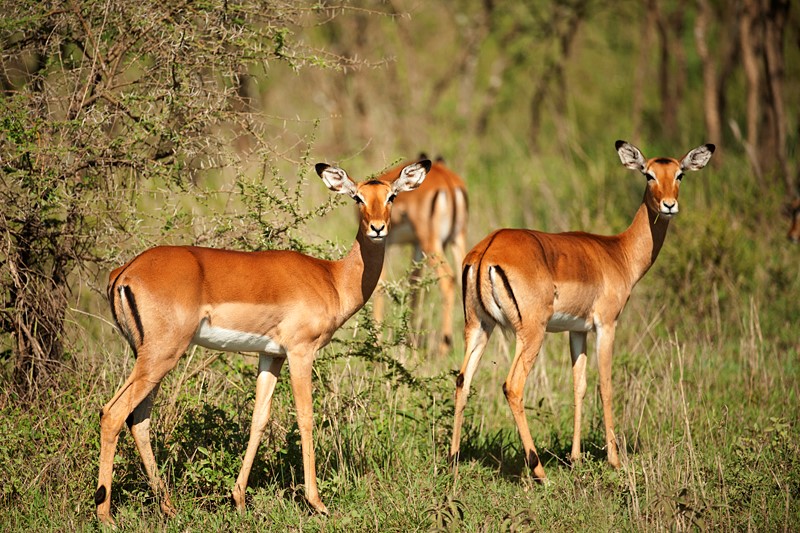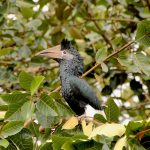Impalas in Uganda: Graceful Gazelles of the Pearl of Africa
Impalas (Aepyceros melampus) , graceful antelopes known for their agility and striking appearance, Impalas in Uganda are a captivating sight in Uganda’s wilderness; Found in various national parks and reserves across the country, these creatures have become an integral part of Uganda’s diverse ecosystem and a highlight for wildlife enthusiasts and tourists.
Physical Characteristics:
Impalas are medium-sized antelopes, with striking reddish-brown coats and characteristic black stripes running along their flanks. The males, known as rams, feature long, lyre-shaped horns that curve gracefully backward. Females, called ewes, lack horns and are slightly smaller than males. Their distinct markings and elegant build make them a picturesque sight against the Ugandan wilderness.
Habitat and Distribution:
In Uganda, the impala primarily inhabits savannas and grasslands, favoring areas with a mix of woodlands and open spaces. They can be spotted in several locations, including Queen Elizabeth National Park, Murchison Falls National Park, and Kidepo Valley National Park; Their adaptability to different environments has enabled them to thrive in these regions, where they roam freely amidst the diverse landscapes.
Behavior and Social Structure:
These animals are known for their agility and impressive leaping abilities, which they use both for evading predators and for displaying prowess during mating rituals. Impalas often form herds led by a dominant male, with females and younger individuals comprising the rest of the group. The males engage in rutting competitions during the breeding season, showcasing their strength and agility through ritualized fights to establish dominance and mating rights.
During the breeding season, which typically occurs between May and June, male impalas engage in impressive displays to attract females. The dominant male establishes and defends a territory, using vocalizations and physical displays to ward off rival males. The successful male then mates with the females in his harem.
Ecological Importance: – Impalas in Uganda
As herbivores, impalas play a crucial role in maintaining the balance of Uganda’s ecosystem. Their grazing habits influence vegetation growth and help prevent the overgrowth of certain plant species. Additionally, as prey animals, they contribute to the food chain, serving as a food source for predators like lions, leopards, and hyenas, thereby regulating predator populations.
Conservation Status and Threats:
While impalas are not currently considered globally threatened, their populations can face localized threats due to habitat loss, human-wildlife conflict, and poaching; Conservation efforts within national parks in Uganda aim to protect their habitats and ensure the continued existence of these magnificent animals for future generations to appreciate.
Tourism and Viewing Opportunities:
Uganda’s national parks offer excellent opportunities for wildlife enthusiasts and tourists to observe impalas in their natural habitat. Visitors can embark on guided game drives, nature walks, or safaris led by knowledgeable guides who can provide insights into impala behavior and ecology while ensuring minimal disturbance to these animals; The presence of impalas in Uganda’s wilderness adds to the country’s rich biodiversity, contributing to the allure of its natural landscapes and drawing visitors from around the world to witness the beauty and diversity of its wildlife.
Conclusion: – Impalas in Uganda
Impalas in Uganda contribute to the country’s natural beauty and ecological balance. As stewards of the land, it is our responsibility to protect these graceful creatures and their habitats. Through continued conservation efforts, Uganda can ensure that impalas thrive for generations to come, adding to the enchantment of the Pearl of Africa; Impalas, with their striking appearance and fascinating behavior, hold a special place in Uganda’s ecosystem, making them a captivating and essential species within the country’s vibrant wildlife community.








